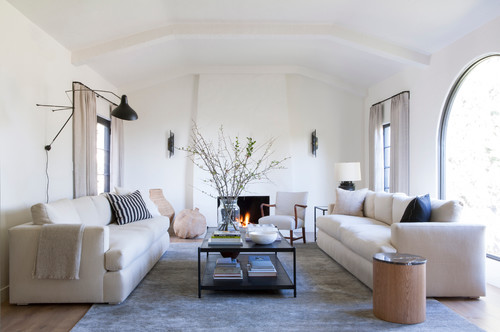Color is the crown of any decor.
Color is the queen of any decorating endeavor and the focal point that brings any interior design project together. This is especially true in compact areas. Where color is employed on the walls, as an accent, or in ornamental objects, it can complete a project. Or not.
Many interior designers provide helpful color suggestions in this regard. What colors should be avoided in tiny rooms, in particular. Here are some thoughts and recommendations.
Please, read our post and do not forget to check our YouTube channel “Grig Stamate”:
https://www.youtube.com/@GrigStamate
You will find there, thousands of designing, furnishing, and decorating ideas for your home interior and outdoors.
Allow me to mention one of them:
Best Small Living Room Design Ideas, Trends and Inspiration, #4 (video)
Watch here a beautiful video from YouTube channel
https://www.youtube.com/@rebeccarobeson1
HOW to Pick Paint Colors | WHEN to Paint | Interior Design (video)
When to choose and when not to choose white in a small room.
Most of the time, white may appear great in most décor jobs. Even modest areas are not immune; many such projects profit from using this non-color to decorate the walls.
White, on the other hand, has the “flaw” of over-brightening dark corners in a small room and reflecting light all around. You don’t want either of these items in your tiny area décor project. Especially now that the notion that small spaces should only be painted white has fallen out of favor.

Photo by DISC Interiors – Browse living room ideas
White paint in a tiny room might make it appear dull and excessively angular. Even while white should make your area feel open and light, it might have the opposite effect.
Don’t be alarmed if you find white paint in your landscaping endeavor. White is also a suitable choice for a tiny area, but only as an accent color. Gray and beige palettes can conserve room in this case. They can also provide a touch of elegance and shine.
What neutral colors to choose for a small space.
In compact areas, neutral hues work well. Although the color palette is limited, a neutral color might give the appearance that a small room is much larger. However, don’t expect any neutral hue to work in a small room.
A muted neutral color can make a small room appear even smaller, but it can also be overly dark. Warm neutral hues that reflect light into the room, mixed with white trim and decorations, provide an open and breezy feeling in the area. Furniture in neutral tones, drapes, and bedding in the same colors, these are the things and accessories that can make a small area in neutral colors look larger.
Do not choose a color that is in trend.
The shades and color palettes you want to use are typically the first ideas you have while documenting your tiny space design project. Don’t choose a trendy hue that you dislike just because it offers a number of short-term advantages. Your goal should be to choose a hue that improves the appearance of your room while also making you feel at ease.
What matters in the end is how you feel when you enter that area, with that chosen color. It makes no difference how large that small space appears with the wrong color if the shade itself does not suit you.
If you have a favorite hue that you want to paint the walls of your room, incorporate it into your design project. And use decor objects to save the room’s appearance. Another effective method is to paint the walls a neutral hue and use your favorite color as an accent color.
Undertone colors should be chosen carefully for small spaces.
When it comes to decorating a small room, every square centimeter counts and should be maximized. A bad color choice for a tiny area is more difficult to conceal because the walls are plainly close to each other no matter where you are in the room. This implies that any layout errors will be obvious.
Color undertones might mean the difference between a good and bad decision for a tiny room. This is why you should pay special attention to a neutral color chosen for the design but with an unexpected undertone, such as pink or green. This detail can be critical in a tiny space. For the better or for the worse.
Striking colors tire you over time.
A bright, trendy, and much too light color is never a good choice for a tiny space design job. A hue in a similar tone, but less flashy, can, on the other hand, make you feel at ease in your own home.
Decorating your little home can get tiresome and overwhelming after a few years of viewing the same bold color shades. An accent wall, painted furniture, or decorations in the hue of your choice are attractive ways to incorporate light colors. And don’t forget that they are simply interchangeable if you wish to modify the overall aesthetic of your little area.
Other related posts from our website:
https://howtobuildahouseblog.com/why-blue-is-the-most-popular-living-room-sofa-color/
https://howtobuildahouseblog.com/summer-colors-in-the-home-interior-design/
Thank you so much for your attention.
Stay tuned. We will upload many other amazing posts to our website and videos onto our YouTube channel.
Thank you so much for your time and attention.
Best Regards
See you to another post,
Bye, Bye



No Responses